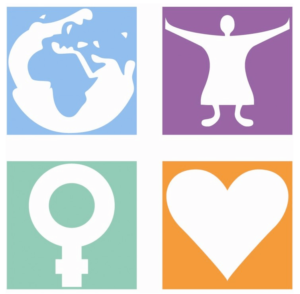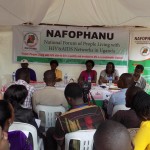TB remains the leading cause of death among reproductive-age women living with HIV. Let’s work together to prevent and treat TB in women
The world commemorates World Tuberculosis (TB) Day (on March 24th every year), to raise public awareness about the devastating health, social, and economic consequences of the disease and strategize to end the global TB epidemic. This year’s theme is “Yes! We can end TB!”. ICWEA is joining the rest of the world to commemorate World TB Day as a mechanism to inspire hope and call for high-level leadership, increased investments, faster uptake of new WHO recommendations, adoption of innovations, accelerated action, and multisectoral collaboration to combat the TB epidemic.
It’s estimated that every day, over 4,000 people die from TB across the world and another 28,000 get infected (Annual WHO Reports). According to WHO news (Oct 2022), the number of people newly diagnosed with TB fell from 7.1 million in 2019 to 5.8 million in 2020. TB rates in Sub-Saharan Africa are up to 10 times higher in pregnant women living with HIV than in pregnant women without HIV infection. TB in pregnant women living with HIV increases the risk of maternal and infant mortality by almost 40%. Statistics show that PLHIV has an annual risk of developing active TB than those without TB whose risk is 10% for their entire lifetime and are more likely than others to contract TB because HIV weakens the immune system that would fight TB germs, making this community more vulnerable to deaths. The World Health Organisation clearly states that HIV and TB form a lethal combination, each speeding the other’s progress, which naturally worries women living with HIV, and yet Target 3.3 of the SGDs clearly mentions TB as one of those epidemics that we need to work towards ending by 2030.
Despite encouraging progress in combating TB, it remains one of the world’s leading causes of death, with an estimated 30 deaths and 223 people getting sick with TB every day in Uganda. TB is the 4th leading cause of death among communicable, maternal, neonatal, and nutritional diseases in Uganda. Community Led Monitoring data from both facility and community interventions (Dec 2022) shows that 74% of respondents were screened for TB symptoms, 91% received TB screening outcome information and 86% were started on TPT at facilities. These figures were observed as best practices from PEPFAR implementing mechanisms and facilitated by better TB case finding, TB linkage to treatment and follow-up of active TB cases and contacts were started on TPT, and a lot of information sharing through national media houses.
Kenya as well is one of the 30 high burden countries that together account for more than 80% of TB cases in the world. Kenya also faces triple burden of HIV, Malaria and TB; with TB being the fourth highest cause of death among infectious diseases. Kenya reported a total of 77,854 drug-sensitive Tuberculosis (DSTB) cases in 2021. This represented a 6.7% increase compared to 2020 when the Country recorded 72,943 DSTB cases. The incidence of TB in Kenya was estimated at 140,000 in 2021, indicating that at least 44% of incident TB cases were either missed or not notified in the year.
Progress has been registered over the years in TB management but there are challenges with providing and accessing other essential TB services. They include inadequate funds invested in improving TB treatment and literacy campaigns in the community, persistent TPT stockouts, stigma and discrimination associated with TB and HIV, limited staffing in TB service delivery, limited resources and prioritization of TB programs compared to other diseases like HIV and limited integration despite the fact the TB is the leading killer of PLHIV. Socio-cultural and health systems barriers in accessing TB care, inadequate information on the benefits of TPT, costs incurred by TB patients, socioeconomic situations, poor health-seeking behavior patterns, concurrent illnesses such as HIV, and social and gender-related impacts are some of the barriers to TPT and TB care.
Ending Tuberculosis calls for the following Actions-
- The Government should increase the investment in TB programs including community-led interventions to ensure TB prevention, early case detection, treatment, and care.
- Governments should scale up access to new medicines for TB that have been proven through research to prevent, treat and cure TB faster with greater treatment outcomes
- Equip high-risk and affected communities to take an active role in TB prevention and treatment
- Scale up integrated TB and HIV services so that for instance mothers and children present at a strategic entry point for increasing access to TB services
- Invest in communities to take up such roles as TB awareness raising, case finding, follow up, treatment adherence, contact tracing as well as monitoring the commitments for
- Increased access to rapid tests and investigations to diagnose TB disease/infection (such as Xpert MTB/Rif, chest radiography, urine LAM, TST/IGRA) should be enhanced through investments in infrastructure, human resources, and logistics
On this World TB Day, we reaffirm our commitment to working together and raising our voices to ensure that TB is no longer a threat to women living with HIV in East Africa and that all people living with HIV receive the care and support they need.”



